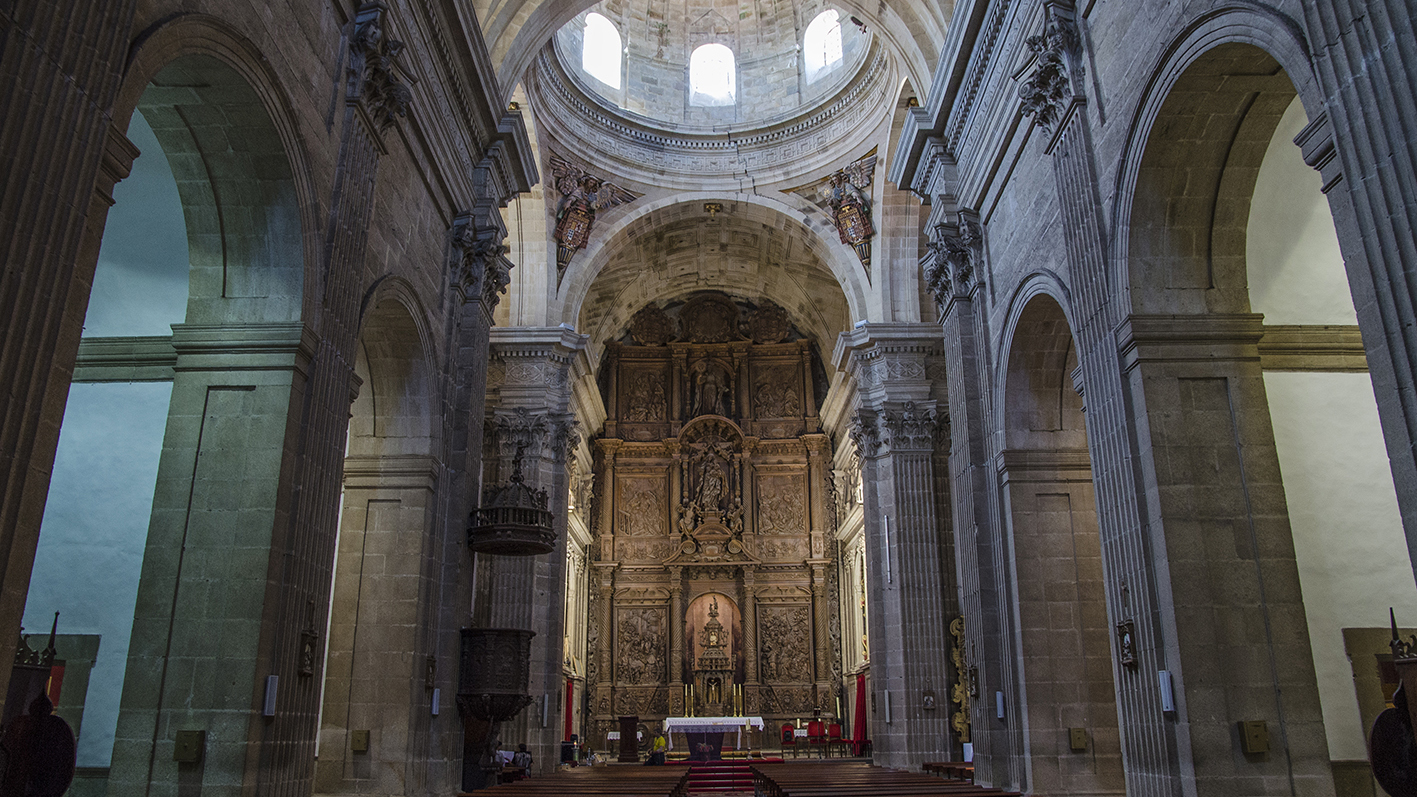03/1/2021 The Council of the Xunta approved the decree declaring Asset of Cultural Interest (BIC), with the category of monument and level of integral protection, the College of Nuestra Señora de la Antigua, a property key to understanding the development of the Renaissance in Galicia and the history of this town.
Cardinal Rodrigo de Castro promoted the construction of Nuestra Señora de la Antigua, on land donated by the City Council, at the end of the 16th century. The building was built with the intention of turning it into a cultural center and museum, as well as the pantheon of its founder. His biographers describe him as an exquisite humanist, lover of art and patron of culture, and also as a character involved in the life of the court of Philip II. At one point in his maturity, he decided to create a philanthropic institution in the city of his childhood, Monforte, and donate his collection of works of art and library. In 1586 he began the conversations for the creation of the college with the Jesuits, with whom he maintained a very good relationship and five years later he ordered the purchase of the land and the following year the works went up for auction. Work on the school began in 1593 with the project drawn up by Andrés Ruíz, a Jesuit from the Valladolid school, and Vermondo Resta, the cardinal's architect in Seville.
The property was throughout its history related to the educational function, although it went through times of greater or lesser splendor. Even through stages of decline related to the consequences of the Lisbon earthquake (1755), with the expulsion of the Jesuits (1767), the looting of the French troops (1809) or a fire in 1824. Already in the hands of the Piarist fathers, who took over the school in 1873, building could be completed in the first quarter of the 20th century thanks to the recognition of the value and subsequent sale of one of the paintings that make up the school's unique collection of paintings and works of art. The painting, work of the Flemish painter Hugo van der Goes, was sold to the German government for a significant financial sum that allowed the works to be completed between 1919 and 1930 with the support and supervision of the House of Alba. The building is also known as the "Galician Escorial” due to the architectural similarities of the two buildings.
The building is in the Herrerian style, with a front 110 meters long and a maximum height of 23 meters. The top floor has a beautiful balustrade of balconies with semicircular arches and each side of the front has its square towers.
The church has a 10 meter diameter dome supported by four arches. The main altarpiece of the temple is a work of Francisco Moure, being commissioned in 1625, it is dedicated for the most part to the Virgin Mary. It has dimensions of almost 20 meters by 10 meters.

On the left of the altar is the prayerful bronze statue of Cardinal Rodrigo de Castro, made by Juan de Bolonia, beneath it is the tomb with the mummified body of the Cardinal.
The Chapel of the Holy Christ has a crucified Christ, in marble in one piece, the work of Valerio Cioli. The Chapel of the Relics, of baroque style, counted on numerous pieces brought by the Cardinal of his trips to Rome. Most were stolen during the Napoleonic invasions of the year 1809 but still a spine of the crown of Christ and the Lignum Crucis of the Cardinal, with two fragments of the cross of Jesus are conserved.
Points of interest of the building are also the cloister with the shields of the Cardinal, the House of Lemos, the House of Alba and the Pious Schools; the 3-section monumental staircase with no apparent point of support for the central and the pinacoteca museum, with works by El Greco and Andrea del Sarto, as well as a portrait of the Cardinal, made by Diego Pacheco.
The building presides over the Field of the Company. The Cardinal had asked the City Council for the transfer of these lands to create an open space that would facilitate his vision and highlight its beauty. The place is an usual meeting point in Monforte. Formerly read the edicts or informed the population of important events, today is the main stage for concerts during the festivities and scenery with other festive and playful events, among which also highlights the Medieval Fair that is celebrated in Easter.
Cardenal Street joins Nuestra Señora de la Antigua with the Plaza de España, it was the Cardinal who ordered the opening of this street to facilitate access from the center of the town to the building.
More information about Monforte monuments accessing here.
